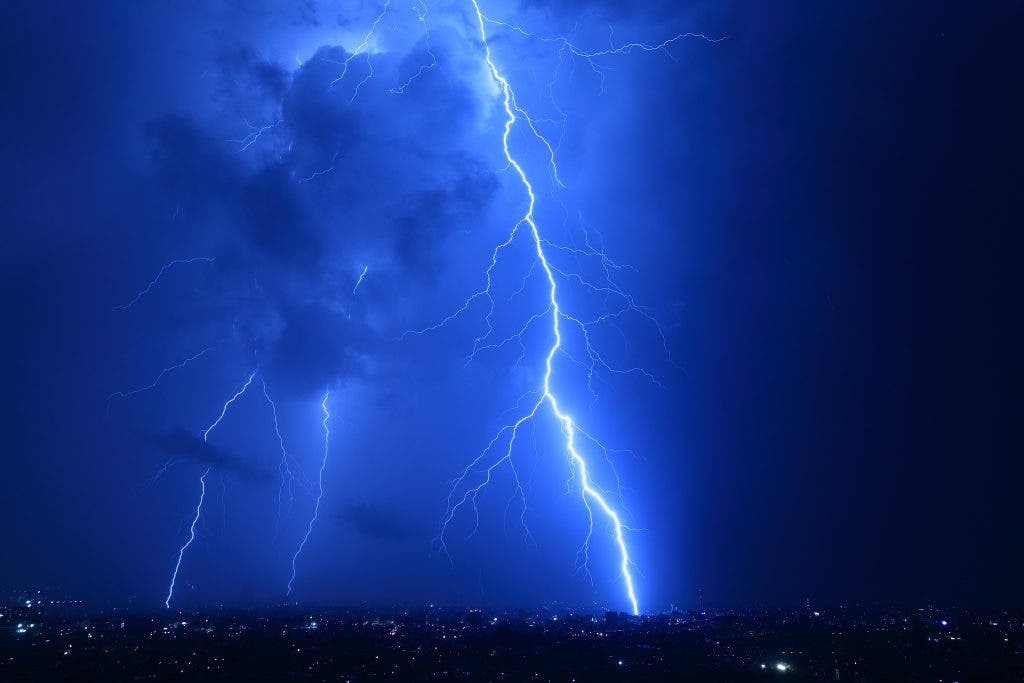For many years, Florida has been described as the lighting capital of the United States. Its unique location, surrounded by warm water, provides everything needed for thunderstorms to form – especially during the summer. The record has surprisingly never been disputed – until now.

Vaisala, a Finnish environmental monitoring company, found that Oklahoma has had slightly more lightning bolts per square kilometer over the last five years. The margin was slim. Florida’s 82.8 strikes per kilometer over the last five years barely edged Oklahoma’s 83.4 flashes, according to Vaisala’s estimations. Still, it’s significant — and probably enough to crown Oklahoma as the lightning state.
The findings were shared by Chris Vagasky, a meteorologist and lightning applications manager at Vaisala. The results have surprised meteorologists in the US. Still, Vagasky argued that the numbers are so close together that makes it “hard to say” whether one state has taken over another one as the record holder in lightings.
BREAKING: Oklahoma has supplanted Florida as the #lightning capital of the United States, according to new data released today. Over the last 5 years, #OKwx has more total lightning per square kilometer than #FLwx. Find out more: https://t.co/K3WD25SR38 pic.twitter.com/ioQOxVlNJl
— Chris Vagasky (@COweatherman) April 20, 2021
Vagasky told AccuWeather that the numbers paint a differing picture of how lightning is impacting each of these states. Vaisala’s National Lightning Detection Network registers about 95% of cloud-to-ground lightning flashes, and between 50% and 60% of in-cloud discharges – with data dating to the late 1980s in the US.
“In Oklahoma, you’re getting a lot more in-cloud lightning, so you see a lot more of the lightning off in the distance,” Vagasky said. “Whereas in Florida you’re actually getting a little bit more of the cloud-to-ground lightning, which is the more dangerous type of lightning because it can impact people, plants, trees, houses and animals.”
Vagasky argued that Florida’s longtime reputation as the US lightning capital comes from the days when detection systems could only record cloud-to-ground lightning. But now, thanks to Vaisala’s detection technology, in-cloud strikes can trigger detection anywhere in the world. That’s why the top spot in the ranking has shifted.
Florida is still very stormy
While Oklahoma gets fewer but larger storms with more lighting rates, Florida is known for its seemingly daily barrage of sea-breeze thunderstorms during the summertime. Most thunderstorms in Florida only last a half-hour to an hour but they generate turrets of cold air that can later produce additional storms.
Vaisala’s data set showed that Oklahoma County, which includes Oklahoma City, averages 120.8 lighting events per square kilometer per year, or about 312.9 per square mile annually. Meanwhile, Orange County, Florida has 159 events per square kilometer per year. That’s 412.3 per square mile.
Other interesting findings showed that Louisiana, for example, comes in third place of the ranking in the US, averaging 71.9 events per square kilometer per year. Alaska, which isn’t covered by the National Lightning Detection Network, wasn’t included in the study. Globally, Singapore is the lighting capital, with 127 events per square kilometer.
“Vaisala owns and operates the global operating data set and we detect lightning pole to pole all around the world,” Vagasky toldAccuWeather. “A couple years ago we detected lightning just 32 miles away from the North Pole, so that probably woke up Santa’s reindeer at the time.”
Earth Networks, another environmental monitoring company that operates its own lightning detection network around the world, told The Washington Post that its data does not support Oklahoma as having overtaken Florida. In 2020, four of the top five most lightning-prone counties in the US were in Florida, according to Earth Networks.
Leaving rankings aside, lightings shouldn’t be ignored. A strike can injure or even kill an individual in a variety of ways, from direct strikes to ground currents to lesser-known types of lightning called sidewinders. The odds of being struck are one in 15,300 over the course of a lifetime (defined as 80 years) according to the National Weather Service.


